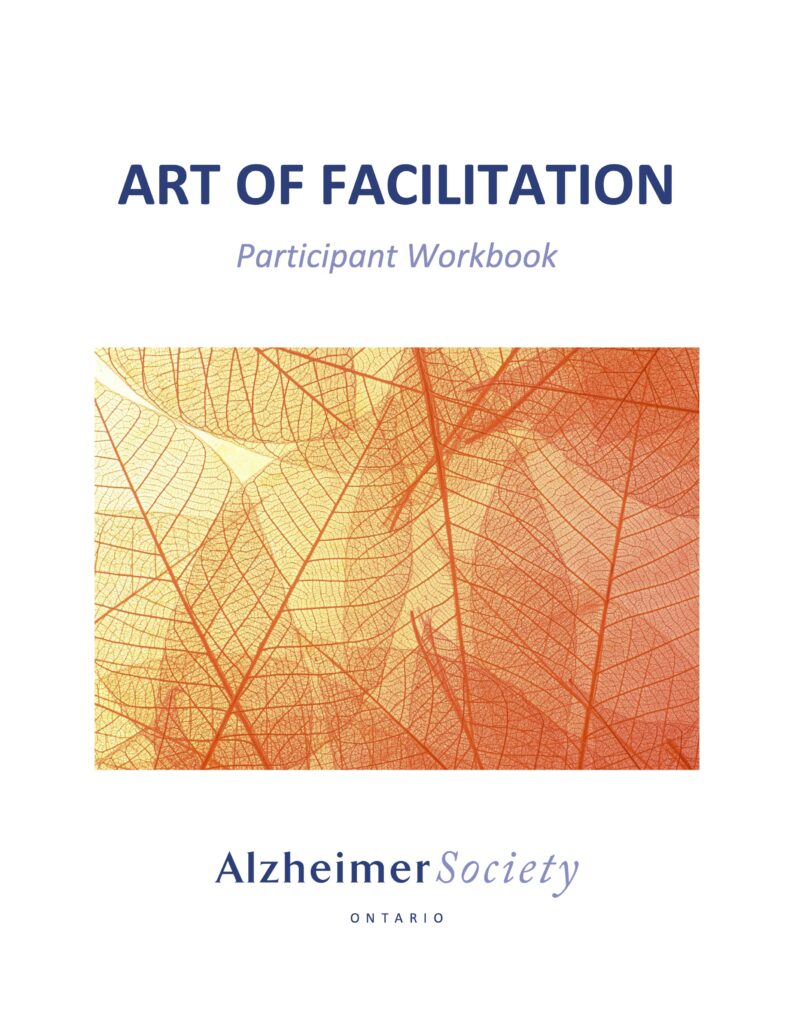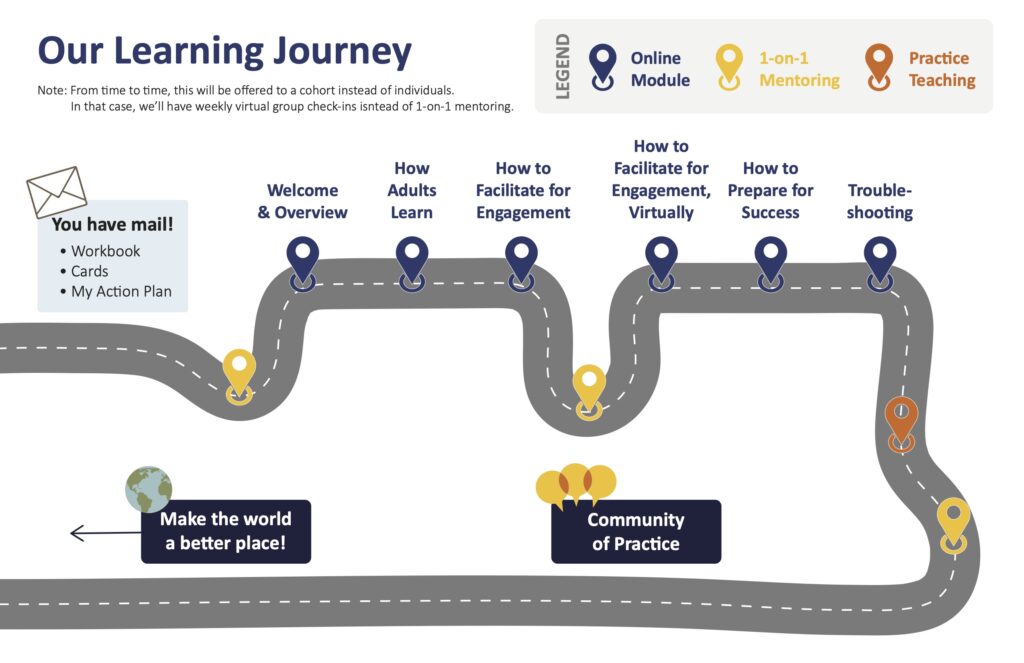Sep 7, 2021

The Situation
Almost ten (10) years ago, Alzheimer Society of Ontario (ASO) started a journey to become a learning-centered organization. They partnered with Global Learning Partners (GLP) and it has been a rich and transformational partnership since then. To help them in their commitment to this approach they trained ASO trainers in the principles and practices to strengthen their impact in Ontario. The results have been noteworthy!
“We believe this approach is key to teaching and learning in a way that will help care partners, health care professionals and people living with dementia understand information and gain important skills that will help them improve their lives and end stigma about dementia.”
The impact of COVID-19 forced many including ASO to pivot and adapt. ASO worked with GLP to bring a learning-centered approach to guide the redesign and translation of the foundational in-person course The Art of Facilitation into an on-demand, self-paced virtual course.
The Journey
In this virtual course, we designed the learning experience to ensure participants are engaged throughout – our goal was for this to be meaningful, practical and personally relevant. To help ensure this, we have used a ‘blended approach’.
Using a blended approach offers a variety of ways to learn. It is our hope that some components of this course will help energize, other components will help teach, and other components will help personalize the learning to maximize the possibility of positive impact as a result.
The eight (8) components of this learning journey are:
- Learning modules on the Moodle platform
- Participant workbook
- Learning tool
- My Facilitation Action Plan
- 1-1 mentoring
- Field work – practice facilitation
- Community of Practice
- Live sessions

CHALLENGE 1 – How to offer an engaging training on facilitation through a self-paced course
Knowing that facilitating is a personal, active experience, we used these four strategies to keep learners engaged throughout:
- Offer places for learners to check their understanding and ask questions. In the learning journey (see image) there are specific places for 1-1 mentoring (or in some cases small group mentoring) with an experienced staff member and engagement with a Community of Practice of experienced trainers. At the end, learners plan and lead a learning event in their community with support from the lead facilitator.
- Use interactive features in the learning platform. ASO uses features such as a clickable map, flash cards that flip and sorting games. This is helpful to holding the interest of learners when they are on their own, and not necessarily part of a cohort that meets regularly.
- Develop a comprehensive printed workbook to hold individual learning progress. The printed Participant Workbook offers many places to personalize learning with places to journal and customized examples drawn from ASO’s past experiences facilitating a variety of groups.
- Design a takeaway product for learner retention. The My Facilitation Action Plan is a tool where learners can add notes/plans for their future work as they moved through the course modules and workbook. At the end of the training, learners will have a one-page image of themselves and their facilitation goals.
CHALLENGE 2 – How to transition an established in-person course to an online environment
As stated earlier, ASO licensed GLP’s The Art of Facilitation course for almost 10 years. It was a scary and uncertain idea to translate this tried-and-tested course online, but the rationale was compelling. We let three decisions guide us in this transition:
- Check in with past learners to learn what was most appreciated and where there were areas for strengthening. We used this as an opportunity for improvement.
- Refocus the course on virtual teaching and learning. Increasingly ASO is meeting and training virtually – even beyond Covid – and this is a high priority and area of interest.
- Ensure a blended approach. There is proven value in a blended approach and The Art of Facilitation course has needed more of this for some time. This initiative allowed for this strengthening and it now offers a model for other ASO training programs.
The Hope
This new learning initiative was launched in August 2021. Although evidence of the impact is not yet available, the hopes for this self-paced learning program are:
- To ensure ASO staff share a common approach and language for training and facilitation
- To ensure a high-quality standard for training
- To extend the reach of ASO so no staff is left behind or excluded unnecessarily from this important training
- To transition into the virtual world with courses and resources to offer
- To put less pressure on the ASO budget, minimizing the need for hotels, flights, food, and other costs
- To offer current and relevant resources and training on facilitation
All this to say, ASO’s main goal is:
- To improve transfer of learning to practice resulting in improved care for persons living with dementia.
Many thanks to Kathy Hickman for her leadership in bringing a learning-centered approach to Alzheimer Society of Ontario during the last 10 years and advancing their work through this creative and compelling initiative.



